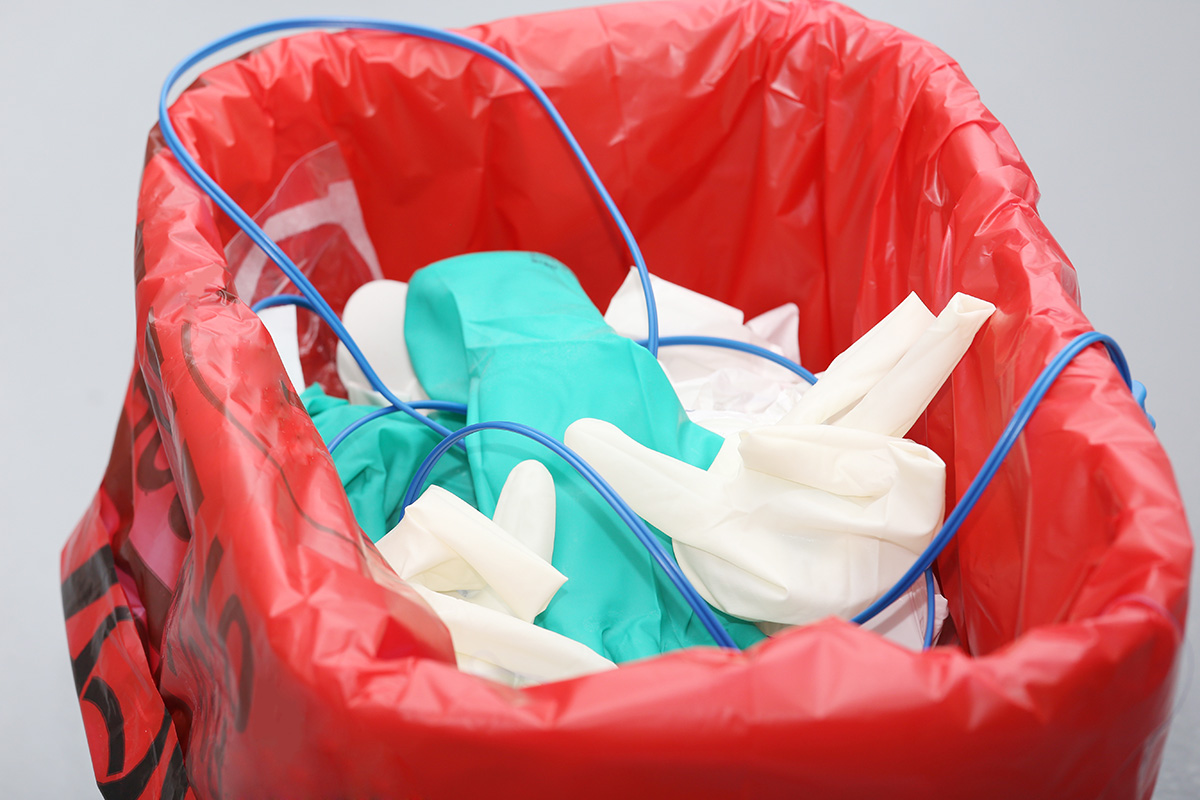In a nutshell, medical waste is anything that contains material that is potentially infectious or that is infectious. Generally, it may contain body fluids and other contaminants such as chemotherapy drugs and other dangerous drugs. Sharps – needles and other sharp pieces including broken glass are also considered medical waste, even if the needles have not been used. The waste may be generated during diagnosis, testing, medical research, treatment of humans or animals and immunization. States and some federal agencies regulate medical waste disposal.
What Are the Different Types of Medical Waste?
Medical waste often goes by different names including:
- Biomedical waste;
- Clinical waste;
- Biohazardous waste;
- Infectious medical waste;
- Regulated medical waste; and
- Healthcare waste.
All of these terms have nearly the same definition. This type of waste is created in healthcare and pharmaceutical facilities and is contaminated or potentially contaminated with material that is infectious.
What is Medical Waste?
Medical waste consists of many different byproducts that are created or found in medical and pharmaceutical facilities. They byproducts are separated into waste categories. The World Health Organization (WHO) has eight categories of medical waste:
- Infectious waste: Anything that may be infectious or that is infectious goes into this category. This may include excreta, swabs, equipment, tissues and lab cultures.
- Sharps: This type of medical waste includes scalpels, needles, broken glass, lancets, staples, razors, trocars, wires or anything else that can pierce the skin.
- Pathological: Any human tissue, fluids, body parts, blood, bodily fluids and contaminated animal carcasses.
- Radioactive: Unused radiotherapy liquid, lab research liquid, glassware and other supplies and equipment that may be contaminated with lab research liquid or radiotherapy liquid.
- Pharmaceuticals: This includes any expired, unused and contaminated drugs and vaccines. Injectables, antibiotics and pills also fall into this category.
- Chemical: Solvents, disinfectants, batteries and any heavy metals that are found in medical equipment. This includes mercury from thermometers.
- Genotoxic waste: This medical waste is highly hazardous and is mutagenic, carcinogenic or teratogenic. Cytotoxic drugs that are used in cancer treatment also fall into this category.
- General non-regulated medical waste: This may also be referred to as non-hazardous waste. This is all other waste that does not pose biological, chemical, radioactive or physical danger.
Medical Waste Disposal
Medical waste may be disposed of on-site or off-site. If your facility disposes of medical waste off-site, a truck picks up the waste. The treating facility then treats the waste and disposes of it as solid waste pursuant to local regulations. Waste may also be disposed of by mail.
Since on-site treatment may be expensive because of the equipment needed, many facilities choose to have their waste transported. Most facilities cannot afford the equipment required for medical waste disposal. If the waste is disposed of by mail, the facility must abide by strict postal regulations.
Treatment of Medical Waste
Treatment of medical waste depends on the type. Pathological medical waste – waste that comes from a living organism, such as tissue, organs, body parts and blood, is usually incinerated. The exceptions are feminine hygiene products and bandages that are not so saturated that they are dripping blood. Other waste may be disposed of by other methods, including being chemically treated to remove the danger of infection.
Contact MedWaste Services
MedWaste Services is 100 percent veteran owned. Contact us to discuss your facility’s medical waste disposal. Our prices are up front and you won’t find any hidden costs in our quotes. You may also choose a la carte services, so you only pay for what you need and save money to use elsewhere at the facility.

